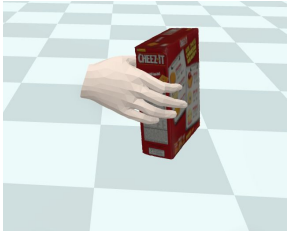Hi Joe,
In rigid body simulations, there is no way to articulate a watertight mesh directly. Hence, we need to separate each joint and create a corresponding mesh to transfer it to simulation. To create a mesh, we use the skinning weights of the MANO model to assign vertices to each hand joint, which naturally causes some gaps because the vertices in-between joints are not connected (also see our appendix for more details). The hand model is defined here, where we assign the meshes to their respective joints.
In our paper, we transferred the simulated hand back to the original MANO model in post-processing to visualize a watertight mesh.
Let me know if you have any more questions.
Best, Sammy
Hi Christsa, While trying to make changes in mano hand model, I'm currently struggling with which part of the code should I change in order to make hand look more like human hand in the simulation. In simulation, it looks like joints are apart and the skinning of the joint part is a bit lacking. It would be grateful if you let me know where to change in the code.

Best regards, Joe